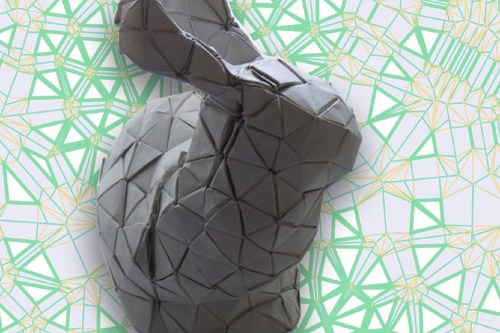
In fact, as an 18-year-old Ph.D. student (yes, you read that right!) at the University of Waterloo, Demaine wrote an algorithm which described how a piece of paper could be folded into any imaginable 3D shape. It was an amazingly impressive piece of work, but it also worked a lot better in theory than in practice, since the algorithm resulted in lots of seams that required the paper to fold awkwardly back on itself.
Jump forward to the present day, and Demaine and colleague Tomohiro Tachi are weeks away from presenting a new, improved origami folding algorithm at the Symposium on Computational Geometry. The new algorithm not only manages to fold any 3D shape out of a piece of paper — but does so with the minimal amount of seams.
“We’ve developed a new algorithm for universal origami design,” Demaine, now a professor of Computer Science at the Massachusetts Institute of Technology, told Digital Trends. “You specify an arbitrary 3D polyhedron as the shape you want to fold, and it tells you a crease pattern for how to fold it. The origami designs it comes up with seem quite efficient in practice, using a large fraction of the paper to form the desired shape. The designs are also ‘watertight,’ meaning that there are no gaps in the layers that make up the desired surface.”
The computer algorithm starts out by mapping the shape of the intended object onto a flat surface. This involves an immense amount of complexity since pieces which may be touching in the final three-dimensional fold could be nowhere near each other on the flat piece of paper. Just as complex as coming up with the algorithm was then setting out to prove its correctness.
But does this thing have any real-world applications, or is it just an impressive computer science achievement that is big on math, but short on real-life uses? Definitely the former, Demaine said.
“The big impact is on manufacturing: Sheet material is plentiful and relatively cheap, and origami offers a way to use it to manufacture 3D surfaces,” he said. “This can be much faster to prototype than traditional 3D printers, and is also very good for making lightweight structures.”
Between this, NASA’s origami robot, and ingestible origami bots that can perform microsurgery inside you, folding paper is so hot right now!